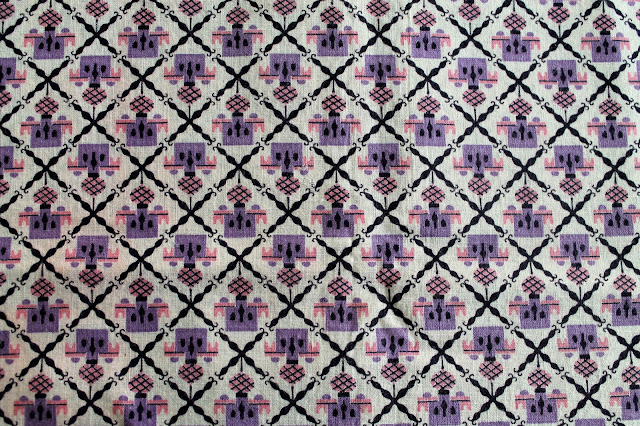In the last post I wrote about going to a lecture about the history of feed sacks at a nearby rural library. At the end of the lecture, I spoke with the presenter about tips on identifying the fabric and then went home to plunder through my stash of material. I kinda had a feeling that the pieces Elizabeth had sent to me back in 2006 might be authentic and they were! She sent me the top 4 pieces shown here.
These next three pieces I picked up at a thrift store after the lecture:
This piece is complete and still has the stitching intact. It's still a bag! I picked this one up at an estate sale.
I picked these next two up at an estate sale as well. Oh my word, it was amazing! I happened to open up an old truck and it was completely full, 50+ uncut pieces, of feed sacks!!!! Since I am trying to stay in the KonMari mind frame (only buy and keep items that bring you true joy) I only walked away with these:
This pattern is so amazing! And I found two full pieces of it.
So now you may be wondering if there are any hidden gems in your stash as well. Here are the hints I have to offer for identifying vintage feed sack material:
Here is an image of the chain stitched cording that holds the bag together. That's kinda an obvious one if your fabric is still stitched in a bag form.
But here is the real tell sign. That thick stitching leaves a very noticeable track of needle openings. It also will have a curved stitch in the bottom corner as shown here. Another characteristic that is something that will develop is noticing the feel and look of feed sack fabric. It's kinda thin and generally wrinkly yet also soft.
I have a hard time using vintage fabric because I would hate to mess up and waste it. That is why I still have those pieces from 2006. I might look into finding some vintage patterns for using feed sack material. I think I could then , maybe, use some of it.












No comments:
Post a Comment